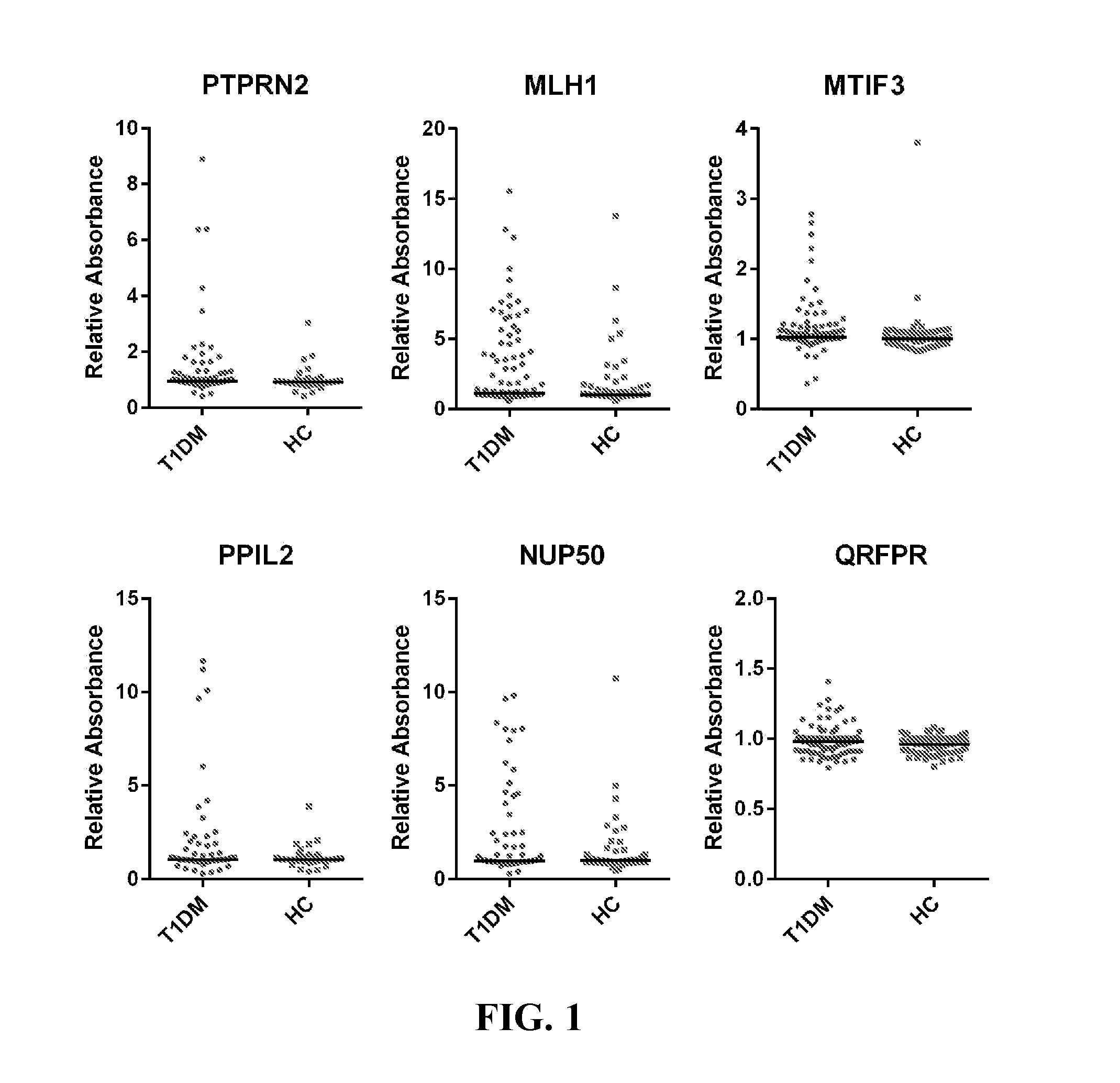Type 1 Diabetes Biomarkers
a biomarker and type 1 diabetes technology, applied in the field of biomarkers, can solve the problems of serious co-morbidities, personal and societal burdens in financial and quality of life, and achieve the effects of improving the sensitivity of detection in t1d patients, and improving the risk prediction model
- Summary
- Abstract
- Description
- Claims
- Application Information
AI Technical Summary
Benefits of technology
Problems solved by technology
Method used
Image
Examples
example
[0016]Sera from T1D patients contain AAbs to human self-proteins. Thus, the sero-reactivity to 10,000 human proteins with sera from T1D patients and measured bound IgG. We scaled down the candidate number for validation in an independent sample set. In the knowledge based approach, we performed ELISA on 126 pancreas enriched genes and validate the candidates in an independent sample set. Taken together, 17 potential autoantigens were identified with sensitivities ranging from 10-27% at 95% specificity (Table 1).
[0017]Rapid antigenic protein in situ display (Rapid) ELISA was performed to confirm the sensitivities of autoantibodies biomakers. 96-well ELISA plates (Corning, Me.) were coated with 10 ng / mL anti-glutathione S-transferase (GST) antibody (GE Healthcare, Pa.) in coating buffer (0.5 M carbonate bicarbonate buffer, pH 9.6) overnight at 4° C. On the next day, coated plates were washed 3 times with PBST and blocked with 5% milk-PBST (0.2% Tween) for 1.5 hrs at room temperature (...
PUM
| Property | Measurement | Unit |
|---|---|---|
| temperature | aaaaa | aaaaa |
| pH | aaaaa | aaaaa |
| length | aaaaa | aaaaa |
Abstract
Description
Claims
Application Information
 Login to View More
Login to View More - R&D
- Intellectual Property
- Life Sciences
- Materials
- Tech Scout
- Unparalleled Data Quality
- Higher Quality Content
- 60% Fewer Hallucinations
Browse by: Latest US Patents, China's latest patents, Technical Efficacy Thesaurus, Application Domain, Technology Topic, Popular Technical Reports.
© 2025 PatSnap. All rights reserved.Legal|Privacy policy|Modern Slavery Act Transparency Statement|Sitemap|About US| Contact US: help@patsnap.com

